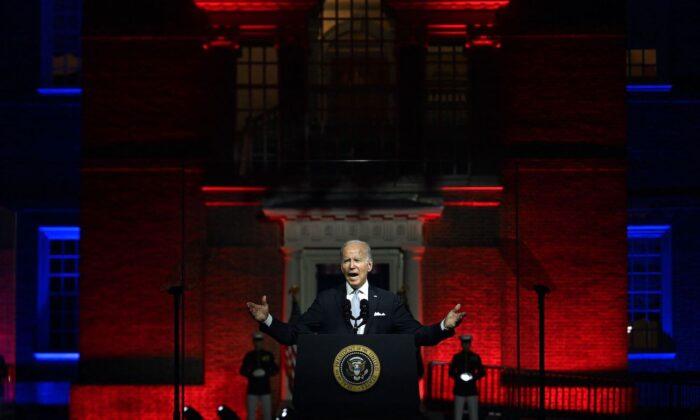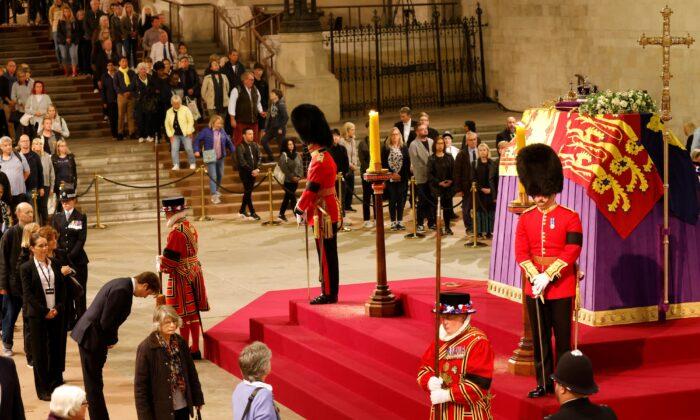Both the United States and the United Kingdom have been through years of hyper-partisanship in which liberals and leftists have aimed at defeating the elected leaders of the people and their will “by any means necessary.”
The political media has been caught up in a groupthink that propagandizes and agitates more than it informs.
One expression of this is the remarkably similar press briefings in both countries, given by the president or prime minister (or his substitute) about the COVID-19 pandemic.
The pattern is the same: aggressive and disrespectful questions from reporters aimed at the political leader, fawning respect for the health officials who flank him, while ignoring obvious questions such as ones about the health costs of shutting down economic activity and throwing millions out of work.
Boris Johnson
In the UK, the far left and the pro-EU urban elites and their media have been attacking the prime minister for years, day in and day out, in terms and with a passion matching the obsessive Trump-bashing in the United States.But when the Queen addressed the nation—invoking Easter, the Resurrection, and the spirit of the Blitz in World War II—and the same evening, Boris Johnson (universally referred to by his first name) was admitted to the hospital with COVID-19, the tone changed.
Boris, like Trump, was much criticized on the left for failing to react more quickly and strictly to the disease. But his own illness had overridden politics.
I found myself going into a mini-meltdown when I heard the news that the prime minister’s condition had deteriorated and he had been moved to ICU. I worried about how we would all cope if he died, and I realized this felt more like a close family member than a politician or even close friend.
Our brains, Hobsbawm argues, are wired in such a way that the human need for connection, for love, overcomes our party tribalism at such moments.
Americans wondered whether such basic human decency would prevail in similar circumstances in the United States, where media and politicians reinforce daily what has come to be called Trump Derangement Syndrome (TDS). They continue to inflame passions as an election approaches, after years of efforts to bring down the president by other means.
It’s true that TDS has infected even conservative British publications, such as the Telegraph, whose U.S. coverage generally follows, in its news reporting as well as its op-eds, the intensely and consistently anti-Trump line of The New York Times and The Washington Post.
All About Trump
It is unsurprising, then, to find in the United States two entirely different versions of recent events, even a rewriting of history.In one narrative, advanced by Democratic presidential contender Joe Biden, House Speaker Nancy Pelosi (D-Calif.), and The New York Times, President Donald Trump bears responsibility for many, perhaps, thousands of American deaths for his failure to act decisively and earlier than he did.
But, as the second version argues, those officials seeking to sound the alarm were minority voices at a time when agencies with specific institutional expertise such as the CDC, and international organizations such as the WHO, were amplifying China’s campaign of disinformation and minimizing the risk to Americans.
Democrats, no less deceived about the risks posed by the virus, were preoccupied with other matters, such as impeachment. They downplayed the threat of an epidemic in the United States, seeing xenophobia, racism, and the hurt feelings of Chinese Americans as a bigger problem. Trump, on the other hand, pivoted quickly and moved energetically once the potential threat became clear.
Biden still assures us that viruses do not respect borders or travel bans, in spite of the apparent importance of borders and travel restrictions in slowing or limiting the pandemic. In the would-be borderless empire of the European Union, member nations had to depend on themselves and their elected, accountable leaders while border controls were revived everywhere. Borders played a major role in countries such as New Zealand and Taiwan, with low infection rates and natural borders or early travel restrictions.
Biden and others mocked the president for stating on Jan. 22 that “We have it totally under control. It is one person, coming in from China.” But that is just what it was on Jan. 22. The first case of the virus in the United States was reported the day before, of a man who had traveled from Wuhan, China.
On Jan. 28, when the WHO was still praising China for its “speed and openness” in dealing with the virus, the president expanded airport screenings and established mandatory quarantines for travelers with symptoms.
Two days after that, Jan. 30, the CDC confirmed for the first time that the virus was spreading person to person. That same day, Trump established the White House coronavirus task force to coordinate the response.
The next day, Jan. 31, Trump banned travel between the United States and China. Biden denounced the ban, which may have saved many thousands of lives, saying, “This is no time for Donald Trump’s record of hysteria and xenophobia.” Weeks later, in mid-February, the CDC was still assuring us that the risk to Americans from the virus was low.
We see the same contradictory narratives about the previous decade. Democrats paint a picture of former President Barack Obama’s expanding the country’s pandemic preparedness work, only to have Trump cut it back when he became president.
Leadership and Opportunism
As Strassel noted in her column in The Wall Street Journal at the beginning of April, “Crises have a way of separating the leaderlike wheat from the opportunistic chaff. Coronavirus is the crisis of our time, and the political winnowing is something to behold.”She enumerated ways in which Trump was leading the pandemic response, giving many examples from the previous week. Speaker Pelosi, on the other hand, “spent this week setting up a new House committee to investigate Donald Trump.”
Playing the blame game is an evasion and distraction we can ill afford.





